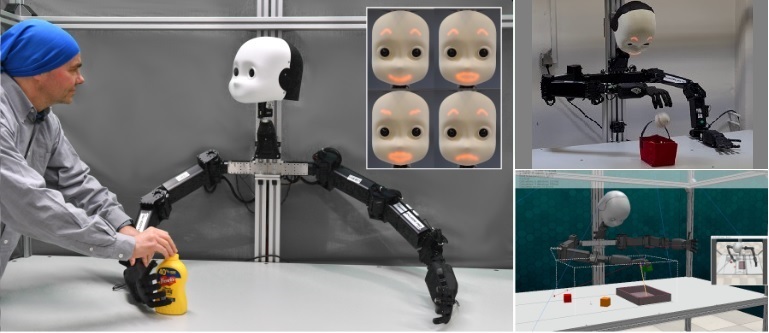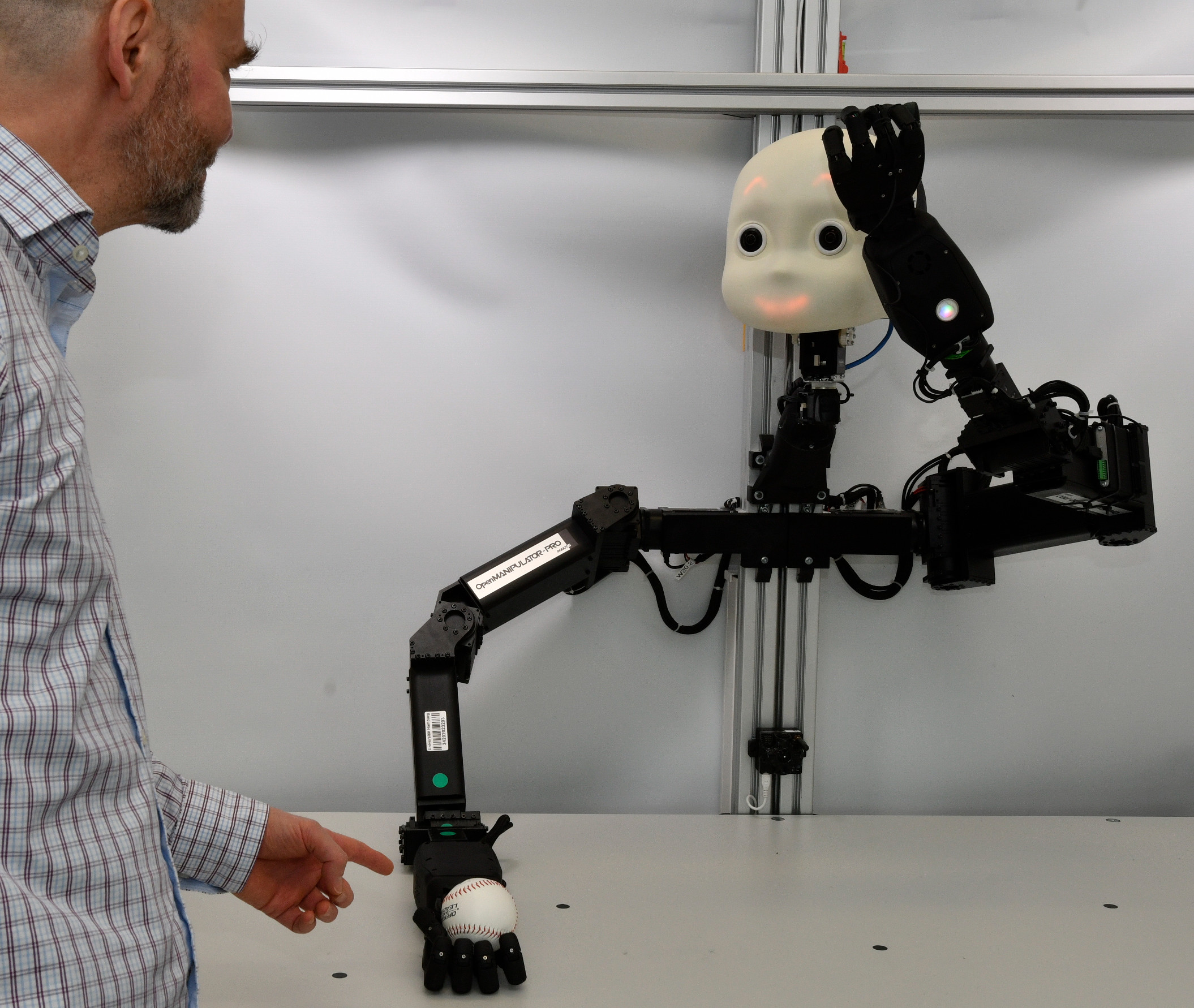NICOL: A Neuro-inspired Collaborative Semi-humanoid Robot that Bridges Social Interaction and Reliable Manipulation

A video of the NICOL in action, engaging in grounded open-ended human-robot conversation:
Introduction video of our novel robot NICOL:
Robotic platforms that can efficiently collaborate with humans in physical tasks constitute a major goal in robotics. However, many existing robotic platforms are either designed for social interaction or industrial object manipulation tasks. The design of collaborative robots seldom emphasizes both their social interaction and physical collaboration abilities. To bridge this gap, we present the novel semi-humanoid NICOL, the Neuro-Inspired COLlaborator. NICOL is a large, newly designed, scaled-up version of its well-evaluated predecessor, the Neuro-Inspired COmpanion (NICO). NICOL adopts NICO's head and facial expression display, and extends its manipulation abilities in terms of precision, object size and workspace size. To introduce and evaluate NICOL, we first develop and extend different neural and hybrid neuro-genetic visuomotor approaches initially developed for the NICO to the larger NICOL and its more complex kinematics. Furthermore, we present a novel neuro-genetic approach that improves the grasp-accuracy of the NICOL to over 99%, outperforming the state-of-the-art IK solvers KDL, TRACK-IK and BIO-IK. Furthermore, we introduce the social interaction capabilities of NICOL, including the auditory and visual capabilities, but also the face and emotion generation capabilities.
Find our article which presents for the first time the humanoid robot NICOL and, thereby, with the neuro-genetic approaches, contributes to the integration of social robotics and neural visuomotor learning for humanoid robots here: ![]()
The NICOL robot has been equipped with human-like social and cognitive competencies, for the purpose of open-ended human-robot conversation and collaboration. A modular and extensible methodology for grounding an LLM with the sensory perceptions and capabilities of the physical robot has been implemented, and multiple deep learning models have been integrated throughout the architecture. For more details refer to our paper and released code:
https://link.springer.com/chapter/10.1007/978-3-031-72341-4_21
https://github.com/pallgeuer/chatty_robots
In the upcoming months we will publish NICOL in detail including software, CAD drawings, URDF model and Simulator model.




Publications
